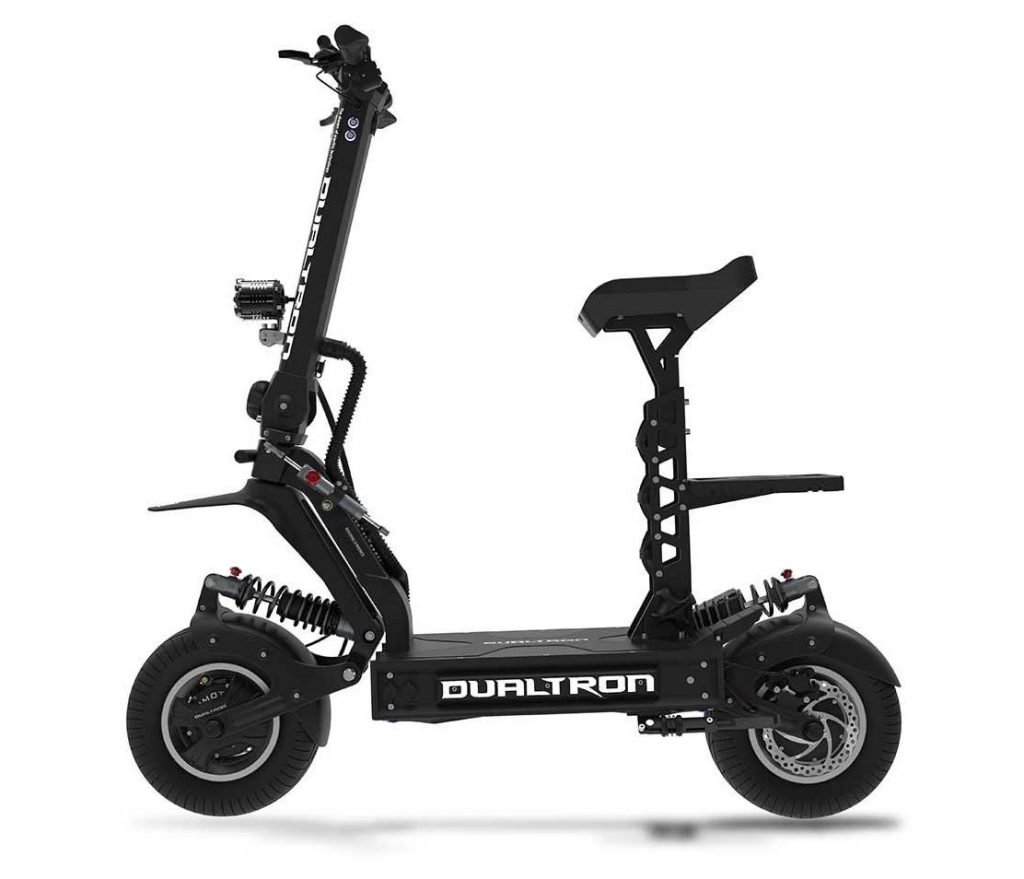Ever since electric scooters became a thing, a debate has been raging on – electric scooter vs motorcycle, which one is better?
In this guide, we’ll carefully analyze the advantages and disadvantages of both vehicles and help you make an informed choice.
Electric scooter vs motorcycle
Choose motorcycles for a thrilling, fast ride with stability on rough roads and good performance in different weather. If you’re going for a safer and cheaper option, ability to move through crowds and traffic without a driving license, pick an electric scooter.
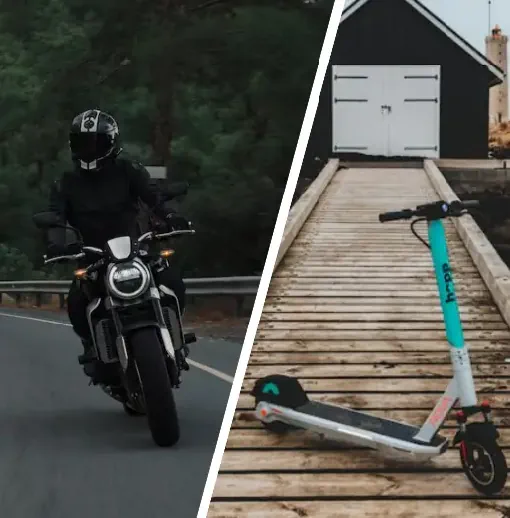
Cost
Motorcycles have a higher upfront cost than electric scooters due to more parts and powerful engines. Scooter prices range from $300 – $3,500, while motorcycles can cost from $4,000 – $20,000.
Unlike electric scooters, motorcycles also have registration and insurance fees. Maintenance for motorcycles is generally higher due to their complex design.
Both vehicles have charging costs. Electric scooters cost a few pennies per charge, while motorcycle fuel can be around $3.68 per gallon, which means that filling up the typical motorcycle will cost about $15.
Usability

Electric scooters are user-friendly due to their lighter and smaller build compared to motorcycles. Their compact size allows easy maneuvering through crowds and tight spaces, making them ideal for short commutes and errands.
Learning to ride an e-scooter is straightforward, with a technique similar to a regular kick scooter. The less powerful motor reduces the risk of major falls, allowing comfortable practice sessions.
Another convenience you get with electric scooters is that you can avoid traffic jams by riding on bike lanes, something you can rarely or never do with a motorcycle.
Sustainability
Electric scooters, being eco-friendly, don’t rely on burning fuel but use rechargeable lithium-ion batteries.
These batteries can last several years, contributing to zero emissions.
In contrast, motorcycles produce harmful air pollutants like carbon monoxide, hydrocarbons, and volatile organic compounds.
Widespread use of electric scooters for short commutes could reduce traffic, resulting in decreased air pollution, fewer respiratory issues, and a cleaner city.
Portability

Electric scooters surpass motorcycles in terms of portability.
With the convenience of foldable designs in some models, electric scooter riders can easily transport them on public transit for extended journeys, providing a distinct advantage over motorcycles that lack this space-saving feature.
Unlike motorcycles, which weigh between 400-800 lbs, most electric scooters weigh only 25 to 80 lbs.
The lighter weight makes scooters more maneuverable, easy to park in small spaces, and convenient for storage inside your house, eliminating the need for paid parking or designated garage space.
Accessibility
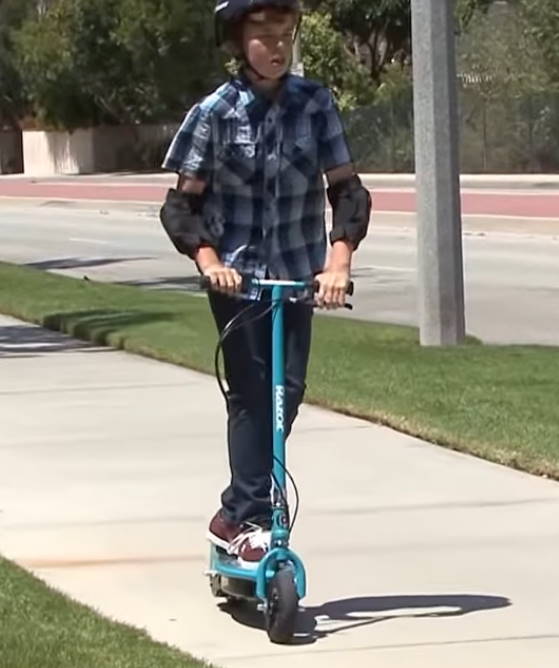
Electric scooters are not only more budget-friendly than motorcycles but also accommodate a wide range of age groups.
While motorcycles can be challenging for older individuals to control, electric scooters offer easier handling.
Age requirements for electric scooters are generally lower than those for motorcycles, and laws and regulations are often more lenient.
A survey revealed that older individuals use electric scooters for various purposes like shopping, leisurely strolls, and visiting friends and family. In the US, the average legal age for electric scooter riders is 16, with some states permitting children as young as 12.
In contrast, motorcycles often have higher age requirements, and the laws and regulations surrounding their operation are generally more stringent.
In addition to being inclusive for various age groups, electric scooters serve as a valuable resource for individuals with mobility challenges, granting them a sense of independence without requiring a driver’s license.
This accessibility makes electric scooters an excellent option for those ineligible for traditional licenses.
Energy efficiency
Motorcycle engines burn fuel, leading to significant energy wastage in the form of heat and other forms.
On the other hand, electric scooters are proven to be 1000% more energy-efficient than combustion vehicles.
With a well-maintained lithium-ion battery in your electric scooter, the charging process ensures minimal electricity wastage.
Sound
A common grievance about motorcycles is their noise. While the EPA mandates exhaust noise emission equipment of at least 80 dB(a), roughly 60-70% of riders surpass this limit.
While some riders may not be bothered by the noise, it can be a significant nuisance for others. Substituting motorcycles with quieter electric scooters contributes to diminishing noise pollution.
The absence of noise also renders electric scooter rides tranquil and stress-relieving.
Maintenance
Electric scooters have fewer mechanical parts prone to wear and tear, requiring minimal maintenance.
Regular cleaning and careful battery handling are sufficient for longevity.
While battery replacement constitutes a significant cost, proper care can extend their life to at least 2 years, often up to 5.
Whereas, motorcycles demand routine oil changes, chain lubrication, filter cleaning, etc.
Besides, electric scooter maintenance can be largely DIY, while motorcycles are better serviced by a mechanic.
Safety

Electric scooters, generally safer than motorcycles, rely on proper safety gear and visibility for rider protection. The key to safety is wearing the right helmet and ensuring visibility to other vehicles and pedestrians.
Motorcycle riders face higher injury risks due to the vehicle’s speed, with a 28 times greater chance of fatality in a crash compared to other motorized vehicles.
Motorcycles and scooters both enhance safety with anti-lock braking systems (ABS) for immediate stops in emergencies, and some feature crash bars to minimize damage and injuries.
Speed

Motorcycles are much faster than electric scooters. You’ll be able to travel large distances much quicker.
The fastest electric scooters are usually as fast as moderately-fast motorcycles.
The average top speed across all electric scooters is around 26 mph / 42 kmh. That’s not a lot if we compare it to the average top speed of motorcycles, which is typically between 70 and 150 mph / 112 and 241 kmh.
And that’s not even taking into account super-fast motorcycles that can have top speeds of over 200 mph / 320 kmh.
Range
Motorcycles boast longer ranges due to higher fuel capacities, covering approximately 150-250 mi / 241-402 km on a single tank, with larger capacities reaching 300-400 mi / 480-640 km.
Comparatively, an average electric scooter has a range of only 20-50 mi / 32-80 km on a single charge.
Although long-range electric scooters with higher battery capacities can reach up to 100 mi / 160 km or more, they still offer less range than the average motorcycle.
Power
Motorcycle engines offer greater power with enhanced torque and horsepower, providing superior control on challenging terrains and achieving higher top speeds and faster acceleration.
Conversely, electric scooters may face motor overheating issues after generating a certain power threshold.
Motorcycles feature specially designed frames and suspensions capable of withstanding the stress of high-speed rides on rough terrains, making them more durable than electric scooters.
Consequently, motorcycles boast a longer lifespan, averaging between 20-30 years, compared to electric scooters with a lifespan of 2 to 5 years, depending on the model’s quality.
It’s important to note that electric scooters, being relatively new, are continually evolving and improving, whereas motorcycles, with a longer history, have undergone years of refinement for increased reliability.
Stability
Motorcycles provide good stability on rough terrains. That’s mostly because of their weight (which makes it challenging to handle, but the tradeoff can be worth it).
This weight also enables them to carry heavier loads and navigate extreme weather conditions without sacrificing speed and performance.
Electric scooters, being lighter, may feel less stable in comparison, particularly on uneven surfaces. The choice between the two depends on personal preference and the type of riding experience one seeks.
Is riding a scooter different than a motorcycle?
Riding an electric scooter differs significantly from riding a motorcycle.
To ride an electric scooter, stand on it, turn on the power switch, and steer while accelerating the throttle. Use hand brakes on the handlebars or the foot brake over the rear wheel for stopping.
For a motorcycle, sit on the bike, turn on the ignition, and warm up if needed. Lean forward, pull in the clutch, and shift to first gear. Move forward by releasing the clutch and twisting the throttle. Stop by applying both brakes and shifting to a lower gear.
Generally, riding a motorcycle is more challenging and requires classes and a license, unlike electric scooters.
Is it better to get an electric scooter or motorcycle?
Choosing between an electric scooter and a motorcycle depends on personal preference, budget, and usage.
Electric scooters are generally safer and more convenient, but preferences vary.
Motorcycles offer higher speeds and a thrilling experience, attracting those seeking excitement not typically found in electric scooters. Consider your abilities and needs before making a decision.
When to use an electric scooter?
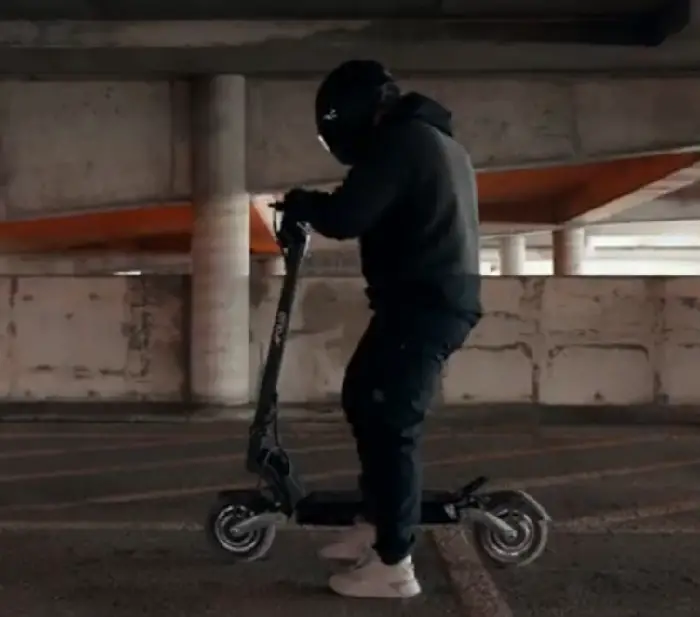
Choose an electric scooter if you seek an affordable, maneuverable vehicle for short commutes and errands.
It’s lightweight, easy to navigate through crowds, and a safer option, especially if you face mobility challenges or lack a driving license.
Embrace the eco-friendly aspect for an added benefit to the environment.
When to use a motorcycle?
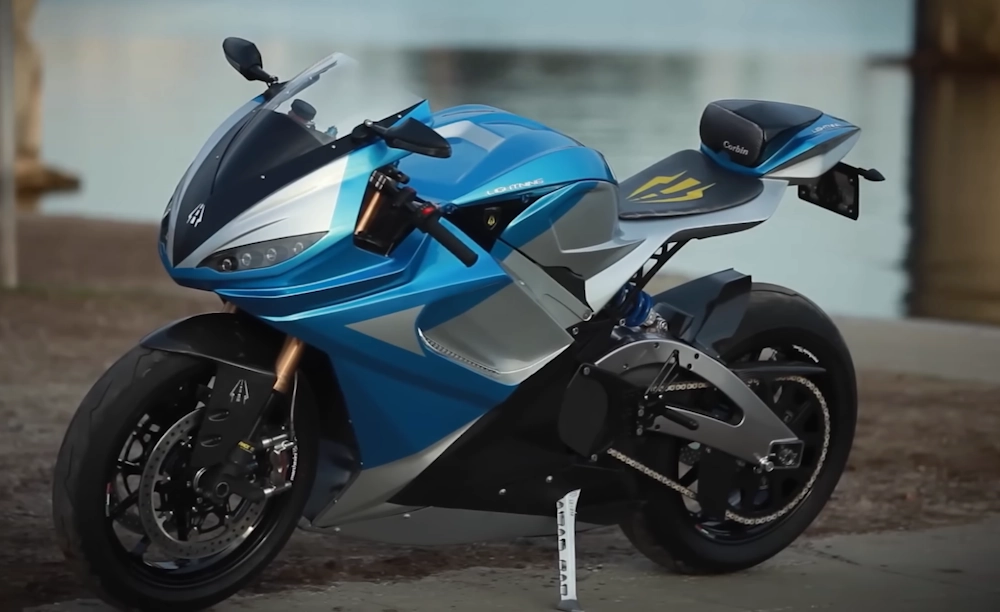
Choose a motorcycle if you desire a thrilling, high-speed vehicle with an appealing aesthetic.
Ideal for longer distances with widespread fuel stations, motorcycles are suitable for carrying heavy loads and navigating rough terrains without compromising performance.







